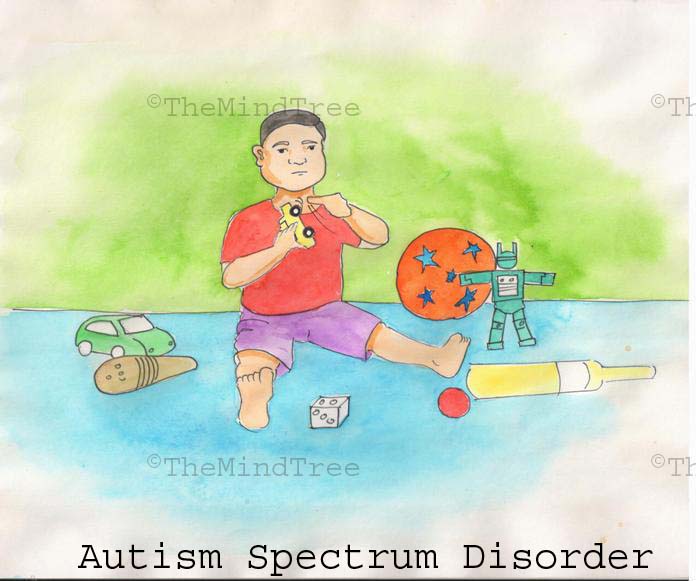Autism Spectrum Disorder has its roots very early in the stage of brain development of a child, where a serious neurodevelopment disorder restricts a child’s ability to communicate and have interactions with others.
The very obvious signs of autism start to appear when a child is between 2 and 3 years old, which include restricted activities and behaviours, which becomes repetitive and plays over and over again.
FACTS
SYMPTOMS
The term autism was coined from the Greek word “autos” meaning self. This term describes a state in which a person is removed from social interactions.
This disease was found first in the early 1900’s. In 1943 American child psychiatrist Leo Kannar started treating children for autism spectrum disorder.
SOCIAL COMMUNICATION AND INTERACTIONS:
- Failing to establish relationship with the children of same age-group.
- Failure to understand human emotions like pain, sorrow or happiness
- Struggling with non-verbal communications like facial expressions, eye contact.
LIMITED INTERESTED IN ACTIVITIES AND PLAYING GAMES:
- They are more attracted to small pieces than a full object as a whole. Example: they will have complete focus on the tyre of a toy car but no interest in the car as a whole.
- A child suffering from autism may have strong fondness for routine, and they may have trouble accepting changes in day to day life. Example: Going out to play or meeting new kids of the same age.
VERBAL AND NON VERBAL COMMUNICATIONS:
- Difficulty in starting a conversation and when a conversation has begun, difficulty in continuing it.
- Difficulty in understanding what the speaker intends by his/her statement. Example: not understanding emotions like humour, pain, and happiness in a statement.
- They often repeat and speak the same things again and again which they heard previously.
CASE STUDIES
Master M, 5 years old seem to develop like a normal child at first, learning to speak when he was 13 months old, learning to walk when he was 2 years old. His problems started, when his family members noticed that he made absolutely no eye contact with them, even when they talked to him for hours, he played with toys, but only with parts of them, like a tyre of a car, piece of a puzzle or head of a doll. When he started going to school, he failed to establish a relationship or any friendship with other children of his age. The teachers described his behaviour as extremely quiet and sometimes he often repeated, what the teachers were saying. He developed no human emotions like other kids, such as loving his parents or being anxious in presence of strangers. When he was brought to the clinic, he got fixated to a door knob and kept on pulling and rolling it. He was diagnosed with Austism following his psychiatric consultation.


